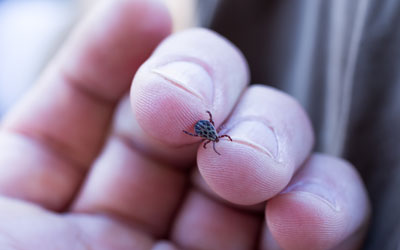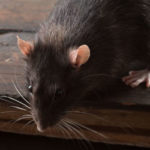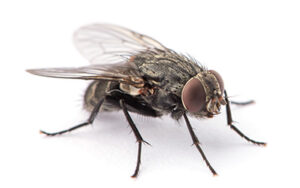
Fleas and ticks may be tiny insects, but they can be two of the most dangerous pests. This is because they are parasitic, meaning they have to feed on the blood of their hosts to survive. As if this wasn’t scary enough—fleas and ticks are capable of transmitting some of the world’s most dangerous diseases. Cats and dogs are most commonly affected by fleas and ticks, but are they dangerous to people as well? Unfortunately, yes! Ticks in particular can transmit blood-borne diseases (including Lyme disease) to people. For this reason, it’s very important to do everything in your power to prevent fleas and ticks on your family and pets.
Diseases Spread by Fleas
When you think of fleas, you likely think of your pets. In addition to getting on your pets, fleas are often brought into the home on rodents if you have an infestation. Although it’s rare, fleas can get onto humans, too. These tiny, reddish brown insects can cause itchy bites and, in serious cases, allergic reactions. Fleas have been linked back to typhus, plague, cat scratch disease, and tapeworms. Because these diseases can be dangerous for you and your pets, it’s essential to prevent fleas.
Tick-Borne Diseases
Ticks can similarly latch onto pets or people, especially outdoors in areas with high grass. There are several types of ticks, and many of them are able to transmit disease. The most common of these is Lyme disease which, if left untreated, can cause damage to the heart and nervous system. Other diseases associated with ticks include Rocky Mountain Spotted Fever (RMDF), Ehrlichiosis, and Tularemia. With such a list, it’s crucial to stay aware of ticks whenever you are outdoors.
How to Prevent Fleas & Ticks
To prevent fleas and ticks, the number one thing you can do is regularly check your pets for them. Especially after a walk or hike, look at your cat or dog’s fur for these tiny insects. Also consider getting preventative medicines from your veterinarian. Fleas and ticks are most often carried by rodents and wildlife. To prevent the parasitic insects, you must also prevent nuisance wildlife infestations. To do so, try implementing the following tips:
- Keep a tidy and clean landscape by avoiding piles of debris, mowing the lawn, and trimming back trees and foliage.
- Ensure garbage cans are securely stored with a tight-fitting lid.
- Don’t leave pet food—or any other food for that matter—outside.
- Because fleas cannot survive in direct sunlight, keeping your home and yard sunny may be a natural deterrent.
- Seal holes and any areas of entry into the home to detract rodents from getting inside.
Preventing Fleas and Ticks in Vermont
Vermont is home to both of these dangerous insects, making it important to learn how to effectively prevent them. If you notice flea or ticks nearby and have more questions, the residential pest control experts at Vermont Pest Control are here to help. Contact us today to learn more!
The Dangers of Fleas & Ticks in Vermont in Vermont
Serving Vermont since 1991





